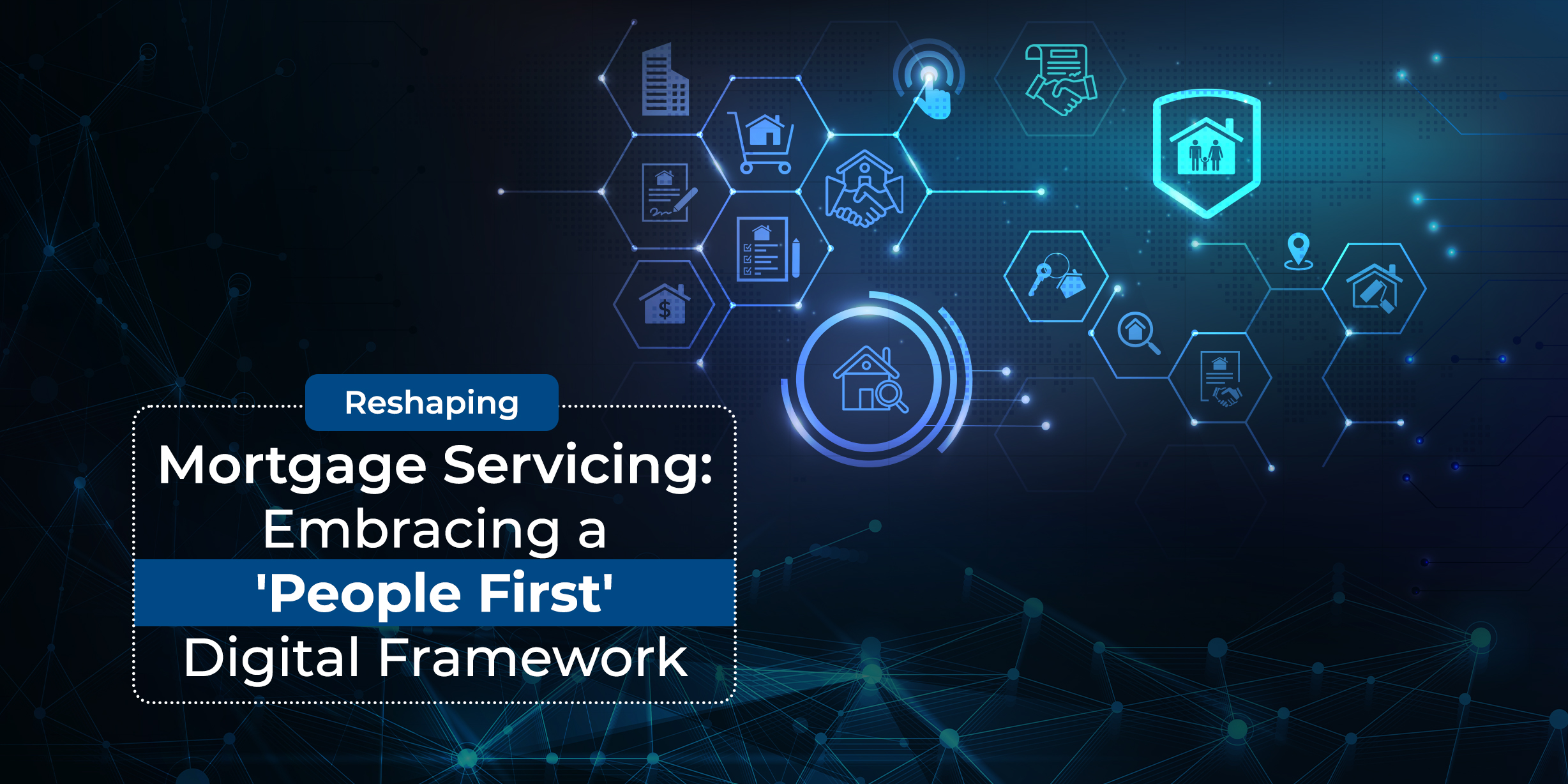As servicing becomes increasingly more digitized, there is a need to prioritize building a people-first digital framework. Already, mortgage servicing technologies like automation, chatbots, analytics models, and document management are transforming the lending process. Research published in The Review of Financial Studies shows that technology can speed up lending processes by as much as 20%.
This has led to a dramatic uptick in interest in digital servicing solutions, with a specific focus on cognitive technologies. In this context, banks and non-banking financial institutions must invest in a people-first digital framework that is centered around borrower needs on one hand, and employee experience and productivity on the other. This would make the digital transformation of mortgage servicing not only value-generating but also sustainable in the long term.
Read More: Do’s and Don’ts of Servicing Mortgages for First-Time Homebuyers
The Rise of Cognitive Technology in Mortgage Servicing
The need for people-first digitization is particularly evident when we consider the rise of cognitive technologies like artificial intelligence (AI) and machine learning (ML) in the mortgage space.
In 2023, 73% of lenders cited operational efficiency as their No. 1 reason to adopt AI/ML, up from 42% in 2018. Interestingly, lenders implementing cognitive technology for customer experiences declined from 41% to 7%, highlighting the renewed importance of the human touch in lending and servicing especially when it comes to customer interactions.
Indeed, there are plenty of AI opportunities in the mortgage servicing sector today due to leapfrog advancements in conversational systems and generative AI. For example, AI can power sentiment analysis and personalized communications to better cater to borrowers’ needs throughout the servicing lifecycle. AI algorithms can help rebalance servicing portfolios in real time based on dynamic market trends, economic indicators, and borrower behavioral data.
Cognitive technology could even help predict default risk and eventually preempt it through proactive recommendations. Ultimately, servicers generate massive amounts of data as part of their operations and analytical models, and AI/ML is an effective tool to unlock value from this information and address some of the gaps left in legacy mortgage technology.
For instance, 45% of borrowers who visited their servicer website during the pandemic were unable to resolve their issues and ended up having to contact a servicing agent via phone, according to research. Cognitive mortgage servicing technologies can address this by introducing a much-needed people-first approach.
Read More: Importance of Task-based Workflows in Accelerating Mortgage Servicing
The Future of Mortgage Servicing Technology: Best Practices for Staying People-First
Embracing mortgage servicing technology at scale can be a double-edged sword. On the one hand, it increases operational efficiencies immensely and can improve decision-making. On the other hand, heightened automation and reliance on data can reduce the human touch in servicing processes. Recent regulatory trends in servicing — like modernized, electronic borrower communication — only heighten this risk. To meet borrower needs, provide enriching experiences, and retain customers, lenders need to stay people-first by:
1. Embracing cognitive technology that mimics human behavior
This could be natural language chatbots that can interact with customers just like human agents. These advanced AI tools would gather, process, analyze, and generate accurate information in near-real-time to fulfill customer queries without being perceived as impersonal.
Another form of this mortgage servicing technology could be gen AI virtual assistants that work alongside servicing agents. These AI assistants could generate summaries, surface customer data, fetch recommendations, and other knowledge management tasks that would be otherwise completed by human workers. Thanks to AI systems such as optical character recognition (OCR), and large language models (LLM), these tools bring cognitive abilities similar to human beings.
2. Insisting on AI explainability and anti-bias testing
As cognitive technology becomes sophisticated, system explainability is the need of the hour. This is the opposite of blackboxed AI systems that work purely at the backend without revealing the inner workings of their models, training data sets, or learning approach.
However, blackboxed AI runs the risk of becoming biased and minimizing accountability, which can hold servicing interfaces from staying people-first. For example, one AI model in mortgage caused 80% of Black applicants to be denied, illustrating how cognitive technology can sometimes work against human-first priorities. To prevent this, lenders need to insist on explainability and anti-bias testing when choosing their mortgage servicing technology vendors.
3. Adopting user-centric AI design
User-centric AI design aims to build cognitive technologies that combine user-friendliness with functional benefits. The discipline is based on deep user research unearthing how they interact with existing products and services, as well as their demographics and psychographics. It allows technology systems to become substantially more intuitive, not only increasing adoption but also your returns from mortgage servicing technology investments.
While AI adoption in servicing is still at a nascent stage, with most servicers only recently upgrading from rules-based automation to intelligent and adaptive processes, the future lies in user-centric AI design. It can future-proof servicing interfaces accessed by both employees and agents while maximizing the value from first and third-party data.
Building the Digital Bedrock for a People-First Future
To abstain maximum value from cognitive technology, servicing industry leaders need to identify the US cases where AI would add the most value and then realign their vision from a people-first perspective. This means factoring in borrower preferences for human agents and personalized assistants, as well as employee concerns around job redundancies and job loss.
A balanced, proactive approach must start with talent reskilling and upskilling and systems overhaul to integrate AI and other advanced mortgage servicing technologies with legacy system and data sources that still remain relevant today. Fortunately, the cloud and data fabrics allow servicers the flexibility to evolve at pace without disruptions.
Speak with Nexval’s experts to know how we can help on this transformation journey.



